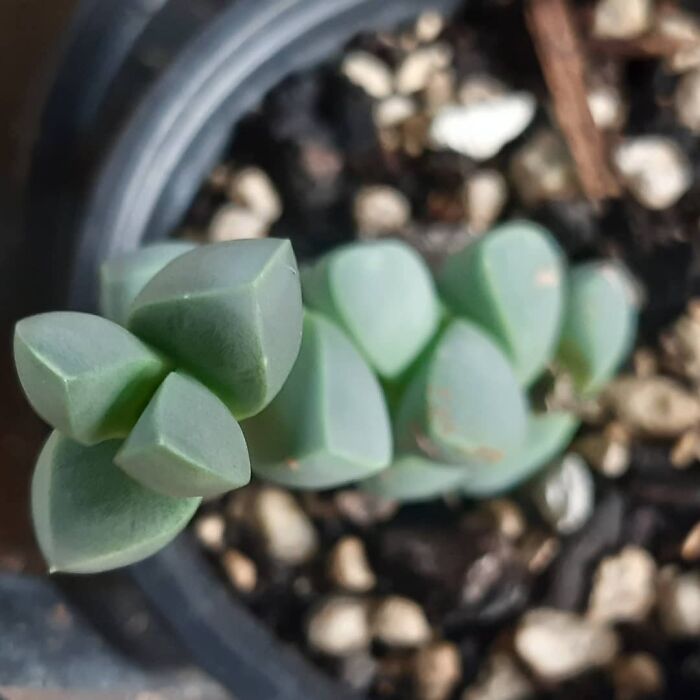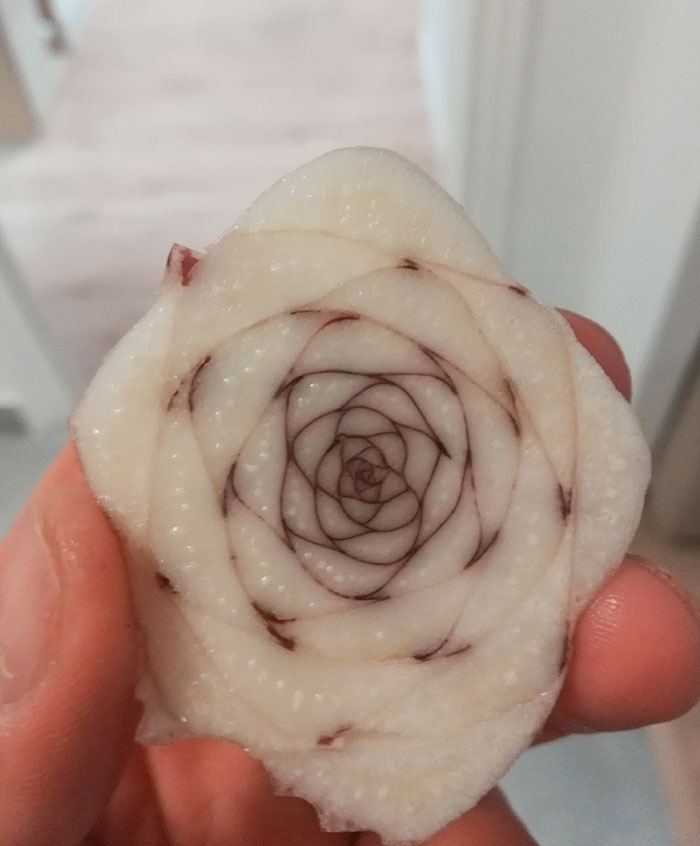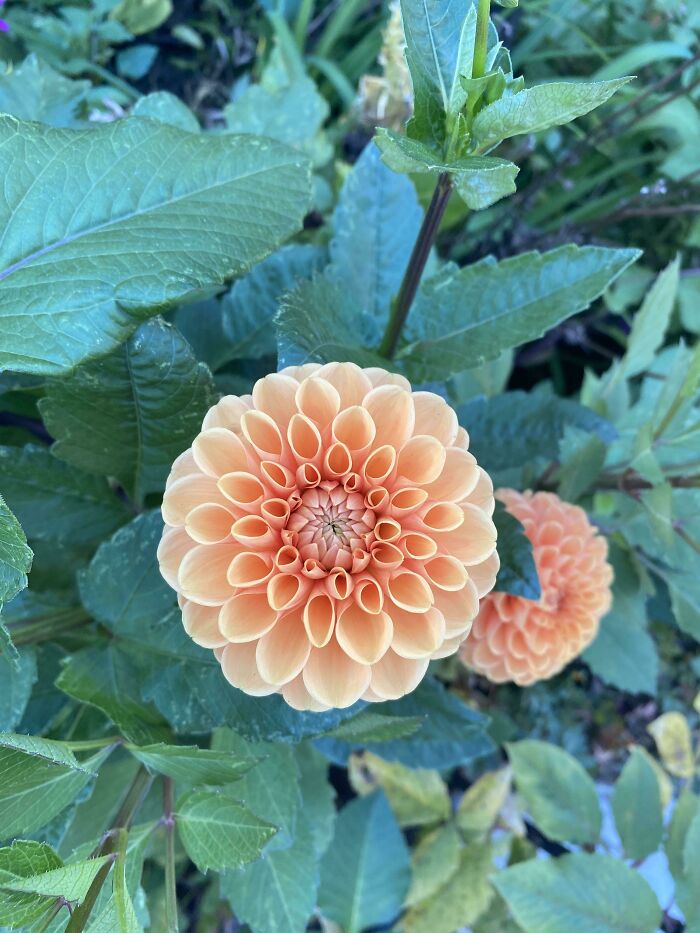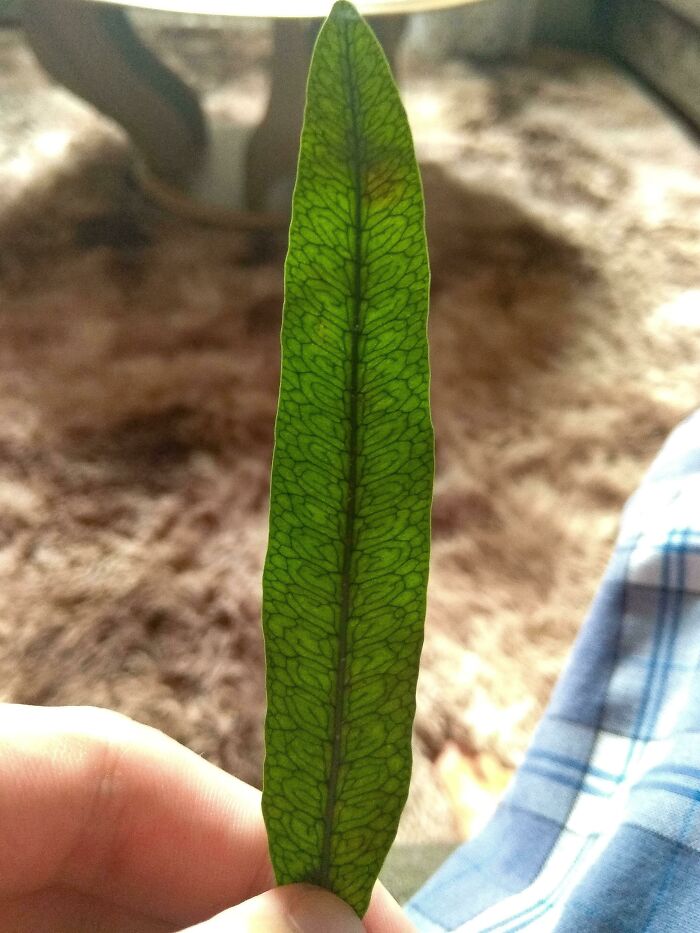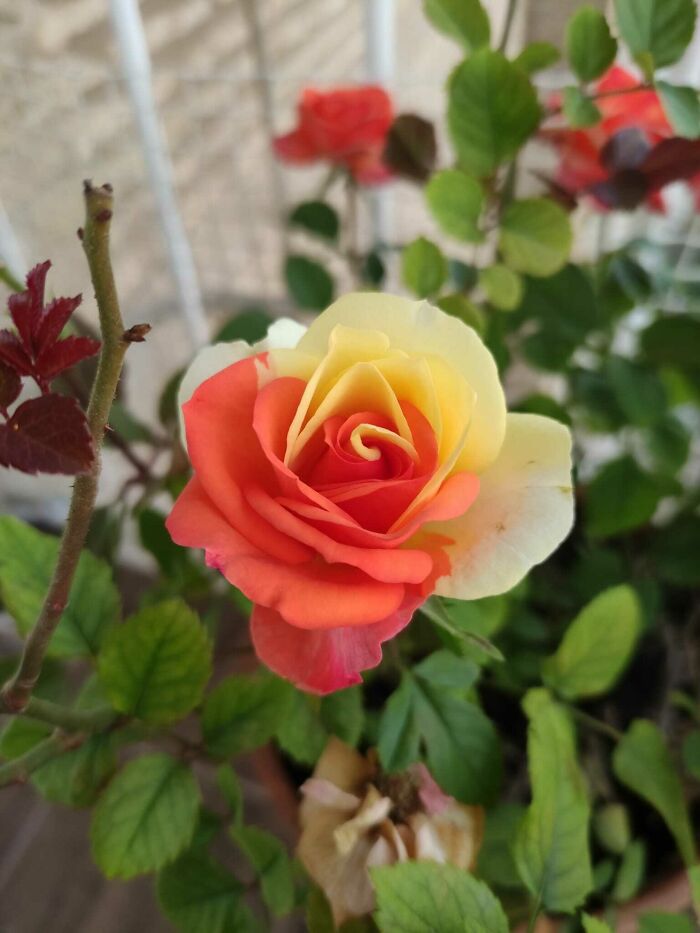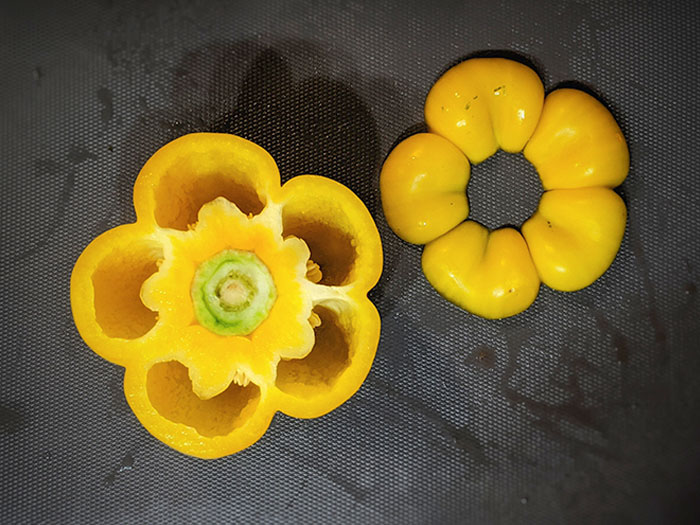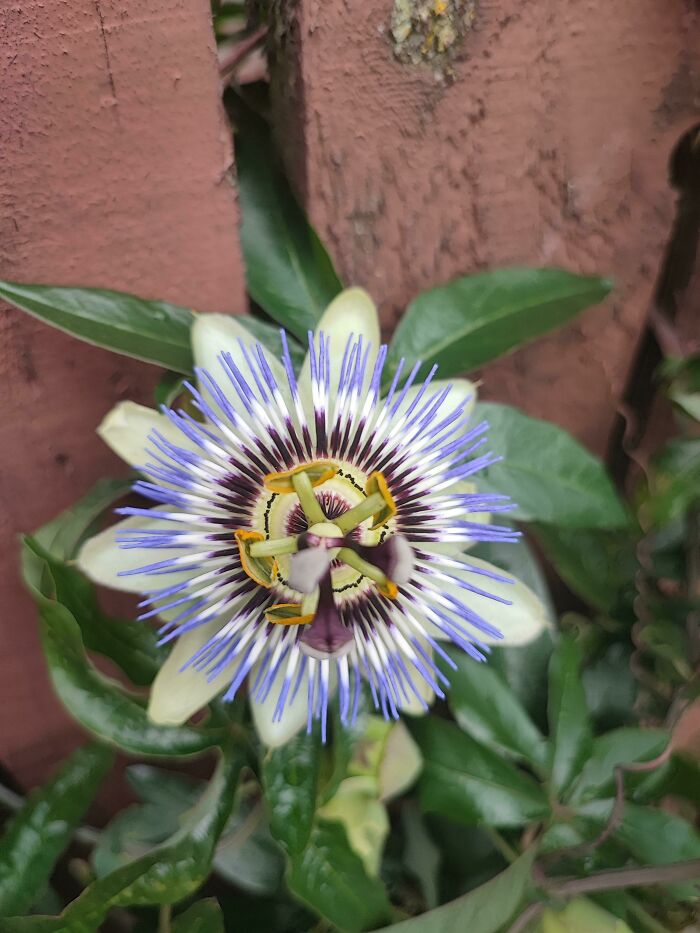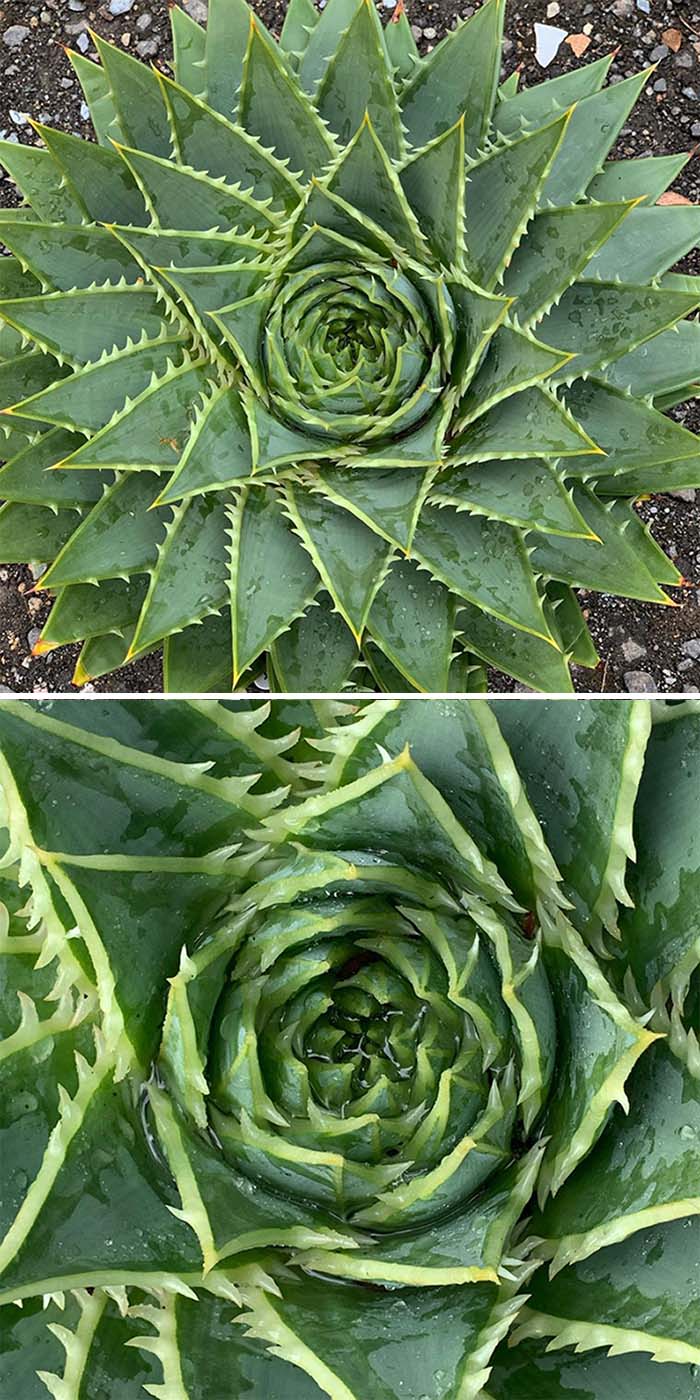Symmetry is usually defined as a sense of "balanced proportions" or "the quality of having parts that match each other," especially in an attractive way. And, when you think about it, it is all around us. Whether we look at human beings, architecture, art, or biology, there’s nothing more fascinating than seeing how the world is full of perfect forms and harmony.
So if you’re a true symmetry lover who loves flawless patterns and wants some order back in their lives, we've got you covered. Today, Bored Panda brings you a list of perfectly geometrical plants that reveal the true beauty of Mother Nature and let us appreciate how special it is.
From the most vivid colors to satisfying shapes, here are some eye-catching images for you to enjoy. Continue scrolling, upvote the ones that soothed your soul, and let us know what you think about them in the comments below! When you’re done with this list, don’t forget to check out Part 1 of this post right here.
This post may include affiliate links.
My Neighbor's Tree Has The Perfect Fall Gradient
Nature, This Is Some Nice Symmetry
The Symmetry On Aloe Polyphylla Is Crazy
To learn more about plants and why they grow in such a mesmerizing way, we reached out to Johan Gielis, a Belgian scientist, professor, and author of The Geometrical Beauty of Plants. He was kind enough to have a little chat and share some insights about the balance and harmony we see in the natural world. Gielis started by mentioning that there are several variants of symmetry, but the most common ones are radial and bilateral (mirror) symmetry.
The radial pattern consists of circular symmetry. When we look down from the top at such a plant, we can see that we could cut it equally from a central point, like you would cut a pie into the same-sized pieces.
The bilateral pattern means that the plant is equal on both sides if we cut it down the middle. In other words, it resembles a mirror effect. If you want to picture it, draw an imaginary line right down the middle of your face and follow it down your spine. You’ll see that your body looks just about the same on both sides, except for some minor scars, moles, and freckles.
Chemistree
And just when I thought I've had enough of benzene rings for this year!
The “Kalanchoe” Succulent Plant
The Night Sky Petunia. A Real Flower Whose Petals Resemble Galaxies
I had 2 pots of these a few summers ago. They're gorgeous! Just don't let them get full sun because the flowers will become all white. They need a good amount of shade to stay looking galactic.
Environmentalist and microbiologist Swanandee Nulkar wrote that flowers alter their appearance because of their need to attract pollinators. "Evolutionary biologists have observed that floral symmetries have changed over many generations from being radial or bilateral to even asymmetric," she wrote. "Scientists have also found that bilateral flowers facilitated pollinator landing."
Nulkar mentioned a study performed on bumblebees, where "the results showed that bees preferred these more symmetric flowers, owing to their greater nectar-producing capacity." It seems that insects prefer symmetry because of its appeal. "A diverse genome is nature’s most favored pick," she added.
The Symmetry Of This Flower
These Leaves In This Tree
Perfect Flower I Came Across While Hiking
Hala Fruit: The Fruit That Looks Like An Exploding Planet
When asked about why plants grow geometrically, Johan Gielis told us that there are both genetic and developmental components. He provided an example: "On the genetic side, one has Antirhinnum majus, which is the very standard flower for the common snapdragon. One variant—A. majus cycloidea—has a symmetrical flower."
He continued that during the evolution of the plant, deviations may also become prevalent. However, "one of the plant groups with almost no deviations during [their] development is the wonderful Asclepiad," otherwise known as milkweed.
Homegrown
A Flower I Found In Hawaii A Few Months Ago
This Absolutely Perfect Flower Is Right Around The Corner From My House
My Succulent's Offshoot
When you walk around in the natural world, you see patterns everywhere you look. It is often said that the Fibonacci sequence rules the growth of the plants and connects all living things. While it may sound confusing, the Fibonacci sequence is actually not that difficult to understand. It is a series of numbers where each one is the sum of the previous two. Starting from 0 and 1, the sequence looks like this: 0, 1, 1, 2, 3, 5, 8, 13, 21, 34, and continues to infinity.
This Mushroom Photographed From Down Below
Underside Of Victoria Amazonica's Lilypad (Up To 200 Cm In Diameter) — Satisfying Ant Terrifying At The Same Time. Veiny Alien Plant-Flesh
Sunflowers Are Actually Made Up Hundreds Of Smaller Flowers In Near-Perfect Symmetry
This sequence is extremely persistent in nature and can be easily noticed in the placement of leaves along the stem, in pine cones, sunflowers, and pineapples. Plus, if you’ve ever heard of the Golden Ratio, it is tightly connected with this sequence. When thinking about the origins of this number, "Leonardo of Pisa [Fibonacci's full name] did not actually discover the sequence," Keith Devlin, a mathematician at Stanford University, said. "It's been around forever."
Nature’s Geometry
Found This "Veiled Lady" Mushroom On A Hike This Morning Near Seoul, South Korea
A Simple Plant With A Satisfying Shape
This Diseased Leaf That Looks Pixilated
"Fibonacci numbers are a very popular subject of research and recreation, and one can find innumerable articles in mathematics, science, architecture, and the arts," Johan Gielis told Bored Panda.
"Especially in the latter fields, they have achieved an almost divine status, because of the relation to the golden mean. From a scientific point of view, however, one needs to be very cautious in the application of the series to actual natural or cultural phenomena."
He continued: "For example, in the arrangement of leaves, the Fibonacci numbers relate the number of spirals going in one direction, to the number of spirals in the other. In a large-scale experiment of popular science, with over 600 sunflowers only 3 out of 4 of the parastichies on sunflowers were direct Fibonacci numbers. The other 1/4 were approximate or modified Fibonacci and Lucas numbers, derived series, or irregular."
The Patterns On This Palm Frond
It's Hard To Tell Where One Plant Ends And Another Begins. Crassula Capitella Is A Geometric Wonder
These Forget-Me-Not’s Grew In A Heart Shape
First Prize Winning Dahlia, Grown By My Dad
So it seems that nature and math go hand in hand. "As humans, we build models of nature, and our language is indeed mathematical," the professor said. "Mathematics is the ultimate human language," he added, saying that without humans, there would be no math.
When asked why we enjoy looking at geometrical and symmetrical plants and find them incredibly pleasing to the eye, Gielis told us that it’s because of our preference for symmetry. But it also has a cultural component: "Different cultures may have a different idea of beauty. What we learn is what we will prefer later," he concluded.
This Swirly Dandelion I Found
The Inside Of My Purple Cabbage
Anyone Else In Love With This Flower Or Is It Just Me?
Flower I Found This Morning
So while we try to grasp how such incredible patterns in nature are formed, we can also take our time to appreciate the many wonders it can offer. Whether flowers are symmetrical or not, they are still mesmerizing to look at. So we hope that with posts like these, you will be reminded of how beautiful nature really is.
The Inside Structure Of This Plant
This Perfect Cluster Of Apples
This Nearly Perfect Dahlia I Spotted At A Local Park
Loving My New Fractal Pups
The Rare Purple Cauliflower. Its Signature Color Comes From The Same Antioxidant Found In Red Cabbage And Red Wine: Anthocyanin
The Perfect Symmetry Of This Plant
These Flowers Arrange Themselves In A Grid
Found That In My Garden - I Think It's Pretty
The Lines And Symmetry Of This Plant Is Just Mesmerizing
Lapidaria Margaretae, Looks Trippy, We're Gonna Collect All The Geometric Looking Succulents Now
How Round This Plant Is
Unedited Flower In My Front Garden
The Petals Of This Camellia Flower
This Symmetrical Leaf On My Philodendron
Geometry In Nature
This Disco-Ball-Looking Flower In Australia
Top View Of This Plant Is A Perfect Star Shape
Asiatic Lily And It’s Spectacular Radial Symmetry
Anyone Else Finding It Satisfying When Plants Pop Symmetrical Patterns? Monstera Producing Only Half Moons Left-Right-Left-Right. My Ocd Is Screaming From Joy
Astrophytum Is My Love. I Collect Them
Geometric Products Of The Mayan Jungles
I recently discovered the romanesco broccoli. Very, very hard to find in stores but so delicious! It tastes like a broccoli crossed with artichoke. 3977227067...yy6n5a.jpg 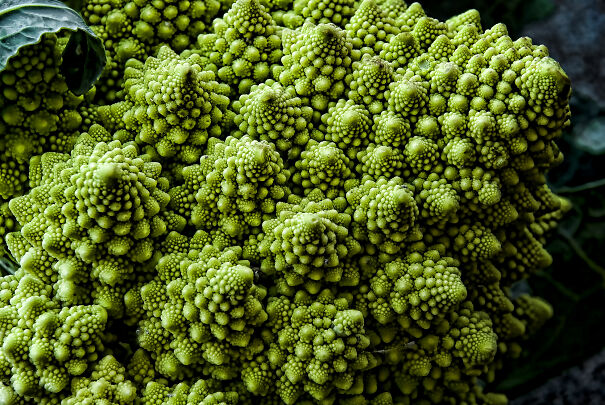
I've had one of those, spent too long admiring it so it was a bit past its best when time to eat.
Load More Replies...if youre interested check out Benoit Mandlebrot, he was a scientist who discovered fractal geometry in plants
Love a good fractal set, i've played around with a good few Mandlebrot generators in my time. DragonEmer...edd2c4.jpg 
I recently discovered the romanesco broccoli. Very, very hard to find in stores but so delicious! It tastes like a broccoli crossed with artichoke. 3977227067...yy6n5a.jpg 
I've had one of those, spent too long admiring it so it was a bit past its best when time to eat.
Load More Replies...if youre interested check out Benoit Mandlebrot, he was a scientist who discovered fractal geometry in plants
Love a good fractal set, i've played around with a good few Mandlebrot generators in my time. DragonEmer...edd2c4.jpg 

 Dark Mode
Dark Mode 

 No fees, cancel anytime
No fees, cancel anytime 




















































